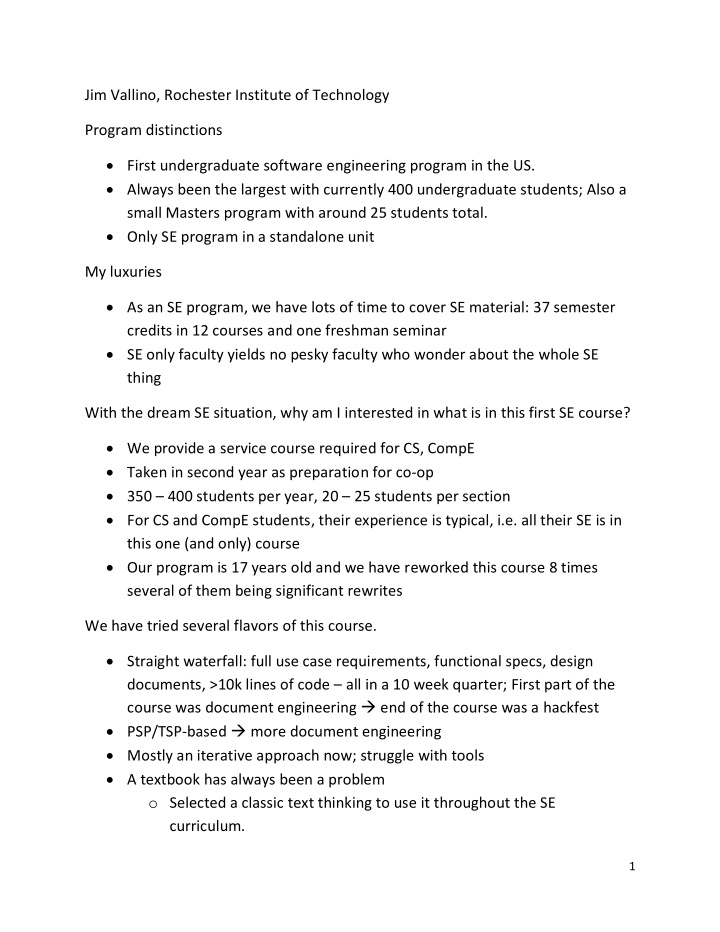



Jim Vallino, Rochester Institute of Technology Program distinctions First undergraduate software engineering program in the US. Always been the largest with currently 400 undergraduate students; Also a small Masters program with around 25 students total. Only SE program in a standalone unit My luxuries As an SE program, we have lots of time to cover SE material: 37 semester credits in 12 courses and one freshman seminar SE only faculty yields no pesky faculty who wonder about the whole SE thing With the dream SE situation, why am I interested in what is in this first SE course? We provide a service course required for CS, CompE Taken in second year as preparation for co-op 350 – 400 students per year, 20 – 25 students per section For CS and CompE students, their experience is typical, i.e. all their SE is in this one (and only) course Our program is 17 years old and we have reworked this course 8 times several of them being significant rewrites We have tried several flavors of this course. Straight waterfall: full use case requirements, functional specs, design documents, >10k lines of code – all in a 10 week quarter; First part of the course was document engineering end of the course was a hackfest PSP/TSP-based more document engineering Mostly an iterative approach now; struggle with tools A textbook has always been a problem o Selected a classic text thinking to use it throughout the SE curriculum. 1
o Even though faculty agreed to this, none of them were willing to use the book in their downstream courses o Reality is that only half the students bought the book, and none of them read it. We are looking at all our courses as part of conversion to a semester calendar. Have settled on several principles. Less is better Lightweight is better We should tailor the course for what is best for the CS and CompE students As long as we don't scare away the SE majors Proposed topic because we thought we were the dummies who could not get this course right; lots of people have issues with it; CS2013 Ironman I don't know the answer but I do have some ideas, and can describe some things that have not worked. Don't look at SE curriculum guide for detailed course content. There is too much stuff there. (Less is better) It's plain nuts to think that you can cover all of a classic text in this one and only course. Attempting to do that will turn into little more than a buzzword exercise A project is essential. Make sure that the class discussions tie closely to the projects; disconnects between lecture discussion and what goes on with the project will have the students asking "Why is this useful?" Tools are important to use but not to teach; concepts regarding why the tools are needed and the workflows that the tools will support are important to teach; use the students (TAs, student-created tutorials) to teach the details of tool use Waterfall is not the way to go unless your employer constituency is in narrow industrial segments, but even then consider this choice carefully; perhaps have an elective process course discussing methodologies Time (and points) for team to reflect on their practice is important 2
Untrench the entrenched faculty. o Don't be straddled with being the only teamwork course o Don't be straddled with being the only communications course o Have "SE" topics covered in other courses (SDF, SE) o Have more than one SE course available 3
Recommend
More recommend